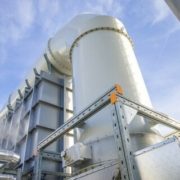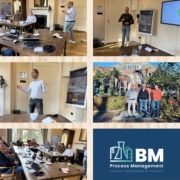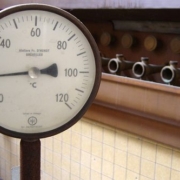How Do You Size a Regenerative Thermal Oxidizer Type for Industrial Applications?
In industrial settings where volatile organic compounds (VOCs) and hazardous air pollutants (HAPs) are released during production, thermal oxidizers play a critical role in controlling emissions. Among them, the regenerative thermal oxidizer (RTO) stands out for its high energy efficiency and performance. But one of the most common technical challenges engineers face is this: how do you size a regenerative thermal oxidizer type correctly for a specific application?
This question is crucial because improper sizing can lead to reduced efficiency, increased fuel consumption, and potential compliance issues. At BM Process, we specialize in designing and delivering emission control systems tailored to the unique needs of industrial clients ensuring not only environmental compliance but also long-term operational cost savings.
Key Factors in RTO Sizing
Properly sizing a regenerative thermal oxidizer involves a detailed understanding of several process specific factors:
1. Airflow Volume
The first and most critical parameter is the volume of exhaust air that needs treatment, typically measured in Nm³/h (normal cubic meters per hour). The system must be capable of handling peak flow rates without compromising destruction efficiency.
2. VOC Concentration
The type and concentration of VOCs in the exhaust stream directly impact the energy balance of the RTO. Higher VOC loads can actually reduce fuel consumption due to the self-sustaining nature of combustion. However, this must be carefully calculated to avoid temperature overshoot.
3. Operating Temperature
Most RTOs operate in the range of 750 °C to 1,000 °C. The thermal design must ensure that the system can consistently maintain the required temperature to achieve at least 95–99% destruction removal efficiency (DRE).
4. Type of Industrial Process
Different industries such as adhesives and surface treatments, tank storage, or chemical processing generate very different types of emissions. BM Process engineers take this into account when recommending the appropriate RTO design, size, and heat recovery configuration.
Custom RTO Design with BM Process
At BM Process, we understand that there is no one-size-fits-all approach to emission control. Our team evaluates your process data, compliance goals, and energy constraints to size and design a custom regenerative thermal oxidizer that meets your operational needs.
We also offer integration with RTO technology that provides up to 96% heat recovery, allowing systems to operate with little to no additional fuel under the right VOC load conditions. Whether you’re expanding production or retrofitting an older system, BM Process ensures your thermal oxidizer solution is sized for performance and longevity.
Importance of Pre-Engineering
Sizing also involves a deep dive into pre-engineering and flow simulation. Factors like pressure drop, fan capacity, residence time, and valve switching logic must be modeled accurately. That’s why we don’t just deliver equipment we provide full technical support and project engineering to ensure your RTO integrates perfectly into your plant layout and process flow.
For more on the design principles behind regenerative thermal oxidizers, the Wikipedia page on thermal oxidizers offers a helpful technical overview of how these systems work and their variations.
Final Thoughts
If you’re asking, “how do you size a regenerative thermal oxidizer type“ for your industrial application, the answer lies in a balance of airflow, VOC load, heat recovery, and system design. At BM Process, we combine technical expertise with real-world engineering to ensure your RTO is not only correctly sized but also optimized for efficiency, reliability, and compliance.
Whether you’re working in chemical manufacturing, involved in surface coating, or operate large tank storage facilities, our team can help you choose and implement the right system for your needs.




